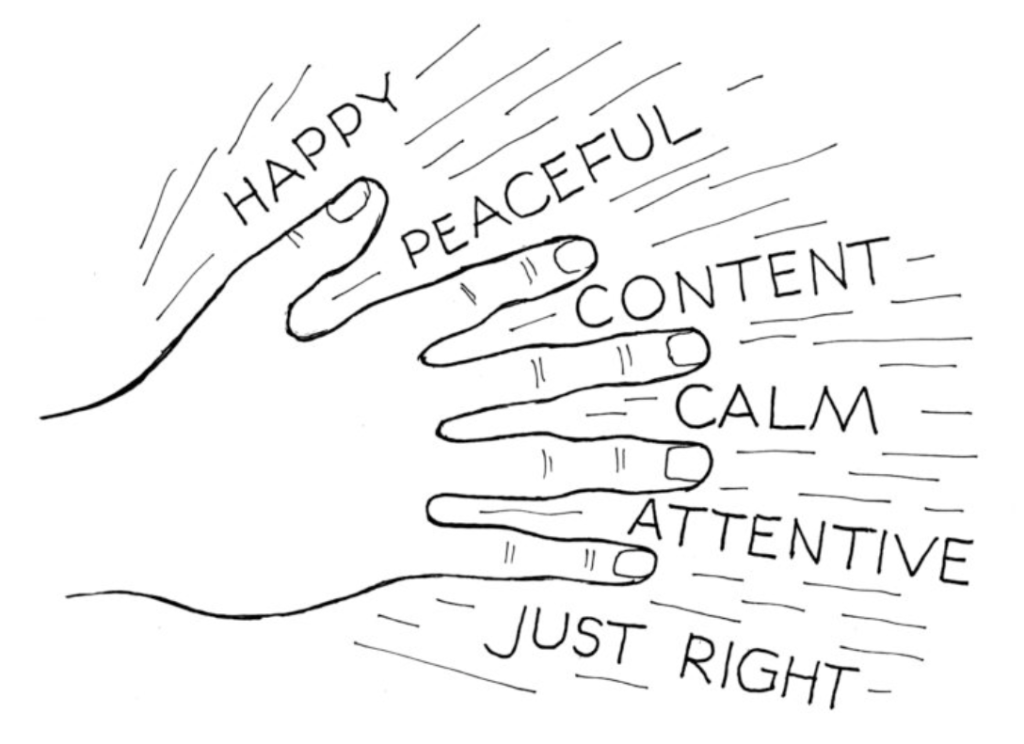Tips For Helping Your Students Focus On &
Enjoy Reading

Author of Stay Cool and In Control with the Keep-Calm Guru and Occupational Therapist, Lauren Brukner shares simple tools & movement breaks that help children focus on reading.
Overstimulated children often have difficulty reading. It is possible for them to skip lines and rush through their reading. Decoding might be difficult for them, and they mind find comprehension and visual focus difficult.
Good news: there are many movement strategies and supports that can help students deal with overstimulation and work on the underlying components of reading!
I’ve put together several easy exercises that students can do in class. I’ve also included some simple but effective tools to help them focus on their reading.
Movement strategies include crossing midline (where one side of the body crosses to the other side, leading to cross-hemispheric integration), tactile (touch), visual input, and proprioception (deep pressure on joints to improve body awareness).
Students can do these strategies as stand-alone movements or as a sequence before reading as a preparatory activity, as well as during the reading process as a break to ensure that their pace and attention are extended through the resulting sensory feedback.
Place visual reminders of these strategies near reading areas to encourage students to engage in the exercise sequences during reading periods to maximise sustained reading and regulation.
SMALL MOVEMENT EXERCISES
Temple taps: Students gently tap the sides of their head in a brisk and steady manner, repeating five to 10 times.
Eye break: Students rub their palms together until they feel warm. Have them close their eyes and gently place their warmed palms over their eyes for 10 to 20 seconds. This is a great exercise to use both before reading and when students’ eyes begin to lose focus during reading.
During school-based tasks involving sustained visual focus (e.g., near and far point copying, reading from a book and from the board), students may experience eye muscle fatigue. Utilizing an eye break at regular intervals or whenever the eyes start to experience fatigue can give tired eye muscles a brief rest and can improve stamina as well as performance in related tasks.

BIG BREAKS
Whole-body tap-rub-squeeze combo: Have students stand up with their feet flat on the floor and cross their arms, bringing palms to opposite shoulders. Then, beginning at the shoulders and moving down to the wrist, they quickly tap up and down. Next, keeping arms crossed at the shoulders, students firmly rub the arms up and down in a steady manner, going up and down from the shoulder to the wrists. Finally, students firmly squeeze the arms up and down in a steady manner from the shoulder to the wrists.
Make an 8: Tell your students the following: “Picture an 8 on its side. Pretend that you’ve drawn it. Picture how it looks and imagine that it’s right in front of you. Take your right hand (moving the shoulder along as well) and trace it carefully. Now, trace over it with your left hand. Now, take both hands together (one fist on top of the other) and trace over the 8 together.”
Note: The make-an-8 activity, while for the whole body, also works on visual attention and acts as an eye break, so it may be a good strategy to utilize when engaging in activities that have significant visual motor and visual perceptual components, such as reading, writing, drawing, copying from the board, and sustaining visual attention during instruction.

USEFUL TOOLS
Using a textured bookmark: Ask your students if they ever find it difficult to focus on the page, or if they often have to read the same word or sentence repeatedly. A bright, plain bookmark that tracks each sentence during reading may help to keep their eyes on the page for longer periods of time and encourage concentration.
Note: The bookmark goes above the words.
Students can make their own bookmarks (younger years may need help). Cut out sheets of paper in the shape of bookmarks. Any type of available paper will work, such as printer paper or lined paper.
An alternative is to use already-made bookmarks. Try placing textured Velcro or stickers on the bookmarks to increase sensory feedback. Students can fidget with the Velcro while reading.
Coloured overlay: A coloured overlay is a colourful see-through sheet that has a narrow window that students can read through, one sentence at a time. The window should be approximately ¾ inch wide, depending on the size of the letters and words the students will be reading. This can make it easier for students to keep their eyes on their reading, because the words are tracked within the window.
DIY: To do it yourself, buy a see-through folder (the brighter and more lightweight ones usually work better). You should be able to get about eight windows from each folder. Cut a thin strip out (approximately the size of a sentence). Students can use it as a bookmark as well.
Alternative DIY: The colour of an overlay can assist with visual tracking and decoding skills. Test out what colour students read through with the most fluidity. Next, cut a transparent folder of that colour in half. Have them read materials through that lens. It’s important that you use a folder that is transparent and thin for this strategy.
Using these exercises as reading preparation activities and as breaks during reading and adding simple tools can help make reading go more smoothly for students.

You can find Lauren Brukner’s books here.